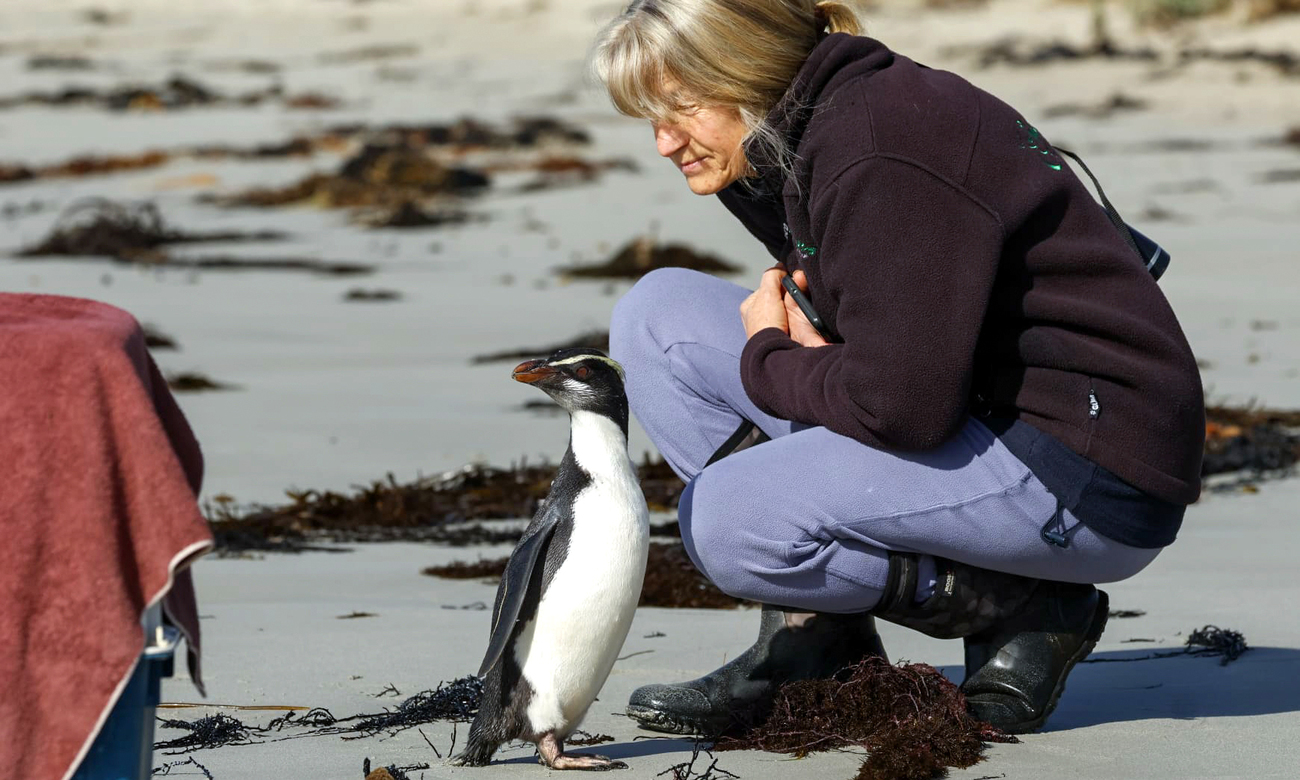Rescuing, rehabilitating, and advocating for Victoria’s koalas
Rescuing, rehabilitating, and advocating for Victoria’s koalasRescuing and rehabilitating two penguins far from home
Rescuing and rehabilitating two penguins far from home

When crested penguins are found ashore along Australia’s coastline, it’s a sign they’re not okay.
They’re thousands of kilometres from home, usually starved and dehydrated, and almost always need intervention from experienced rehabilitators before their release.
This was the case for two tawaki (the Māori name for Fiordland penguins), which ended up under the expert care of our partners at Mosswood Wildlife in Victoria. These penguins call the New Zealand coasts home.
Experienced wildlife rehabilitator and owner of Mosswood Wildlife Tracey Wilson, with our support, has been caring for the two penguins since they first washed ashore in southwest Victoria in mid-July. The second came into her care a few weeks later.
Both birds arrived very weak and underweight. The second penguin had a barnacle attached to its tail—an indication that the bird had been too weak to effectively preen.
How do you care for penguins?
Rehabilitating penguins is no easy feat.
‘It’s a slow burn to start,’ Tracey explains. ‘Hydration is vital. Where you go wrong is if you introduce solid food too quickly. You spend most of the time watching their poo—the colour and consistency determines how they’re doing.
‘Black is bad,’ she continues. ‘It basically means they can’t be saved. Dark green means they haven’t eaten for a long time, and brown is a small relief—it means they have a good chance of survival. Then you hydrate until you see improvements in the birds, and only then can you slowly introduce solids.’

Once they’re in the clear and eating solids, the penguins eat a lot of fish—two kilograms of pilchards is enough for just over one day for one bird.
Tracey starts gradually increasing their pool time so the penguins can strengthen their flippers. This is important because they need the strength to swim long distances. It also encourages preening, which is critical to waterproofing. And waterproofing is vital.
‘You cannot release a penguin unless it’s waterproofed,’ Australian seabird and shorebird ecologist Dr. Eric Woehler explains. ‘They can’t thermoregulate if they’re not waterproofed, and if they can’t thermoregulate, they will die of hypothermia.’
Once they’re waterproofed, confident in swimming, and have gained an acceptable amount of weight, they can be released. But releasing these crested penguins is becoming more and more difficult.
Coming into contact with humans
Australia is a coastal society, so its beaches are populated with people, their dogs, and their fishing lines—all of which pose risks to Tawaki and any other seabirds or marine life that wash ashore.
‘There have always been waves of years where we get a lot of penguins and some years where we get none,’ Tracey says, ‘but one thing we know for sure is that there are a whole lot more people on beaches than there ever used to be.’
As a result, penguin sightings are increasing, but many people don’t know what to do if they see a penguin ashore.

People have been seen stepping over penguins and even taking selfies with them, without calling any wildlife experts to help the animal. This can be detrimental. These penguins shouldn’t be on beaches. We urge you to call for help if you see one.
‘These birds are in a parlous state and are unlikely to survive without some sort of intervention,’ Dr. Woehler explains. ‘It is critical that authorities are notified as soon as possible so suitable, qualified carers and rehabbers can maximise the penguins’ chances of survival.’
Raising awareness and promoting coexistence
A third of Australia’s coastline is home to different species of penguins. As the human population increases, these sightings are going to increase because more people are spending time on Australian beaches. A core aspect of IFAW’s work is raising awareness, educating people, and fostering a world where we can thrive alongside animals.
The message is simple: Be aware, take care, and call the proper authorities. The free IFAW Wildlife Rescue App is a great resource, as it puts you in touch with the closest licensed wildlife rescue group to get help. It’s available across most of Australia and has just launched in Victoria.
As for the two tawaki under the care of Mosswood and IFAW—both have been released back into the ocean where they belong.
Related content
Every problem has a solution, every solution needs support.
The problems we face are urgent, complicated, and resistant to change. Real solutions demand creativity, hard work, and involvement from people like you.